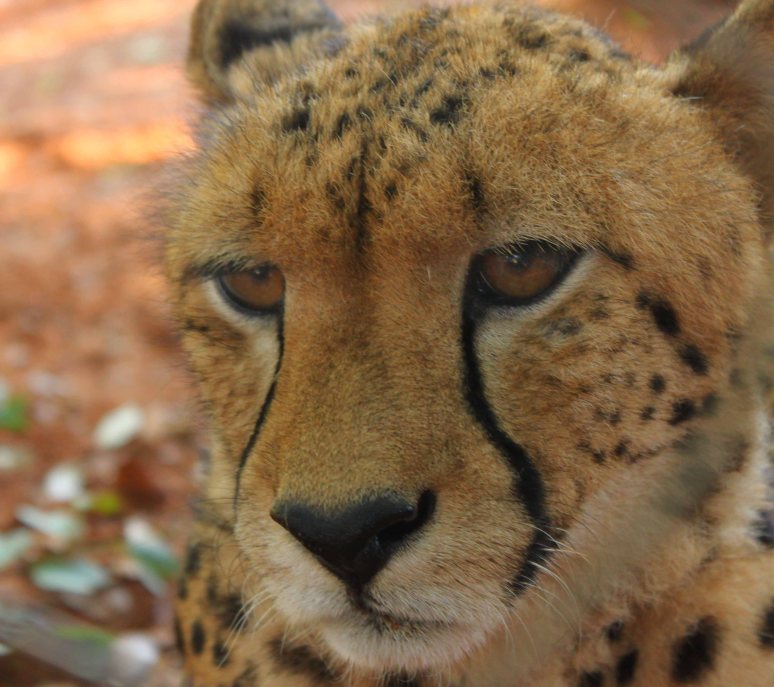Walking the Cats. Cheetah Reservation
Elephants that paint is one of the most far-fetched crowd pleaser ‘s I’ve heard of in terms of tourist attractions that pull in people to animal shows around the world. Snake parks, tiger temples, wolf sanctuaries, elephant shows, butterfly farms, bird averies and dolphin shows, are just some of the things I’ve seen advertised and normally I‘d avoid them like the plague. As a child I never liked the circus mainly because in those days animals performed and were caged. I like my animals to be free and view them in their natural environment. But for organisations that set up sanctuaries and orphanages for mistreated or endangered species I always have time and am willing to spend money. However, having the opportunity to get up close and personal with Cheetahs was the deal breaker and I loved every minute.
It has been estimated that in 1900, more than 100,000 cheetahs were found in at least 44 countries throughout Africa and Asia. Today the species is extinct from +20 countries and about 10,000 animals remain.
The cheetah is aerodynamically built for speed and can accelerate from zero to 40 mph in three strides and to full speed of 70 mph in seconds. As the cheetah runs, only one foot at a time touches the ground. There are two points, in its 20 to 25 foot (7-8 metres) stride when no feet touch the ground.
The cheetah’s long association with humans dates back to the Sumerians, about 3,000 BC, where a leashed cheetah, with a hood on its head, is depicted on an official seal. In early Lower Egypt, it was known as the MAFDET cat-goddess and was revered as a symbol of royalty. Tame cheetahs were kept as close companions to pharaohs, as a symbolic protection to the throne.
heetahs prey on a variety of species from rabbits to small antelope, and the young of larger antelope. Their hunting technique is to stalk as close as possible to the prey, burst into full speed, tripping the prey with a front paw and, as the prey falls, biting it by the throat in a strangulation hold.
Populations continue to decline from loss of habitat, decline of prey species, and conflict with livestock farming. Throughout Africa, cheetahs are not doing well in protected wildlife reserves due to increased competition from other larger predators, such as lion and hyenas, and most protected areas are unable to maintain viable cheetah populations.
Therefore, a large percentage of the remaining cheetah populations are outside of protected reserves, placing them in greater conflict with humans.
Cheetahs do not ROAR, they purrrrrrrrrrrrr.
They have to conserve energy and get very tired after they run.






















